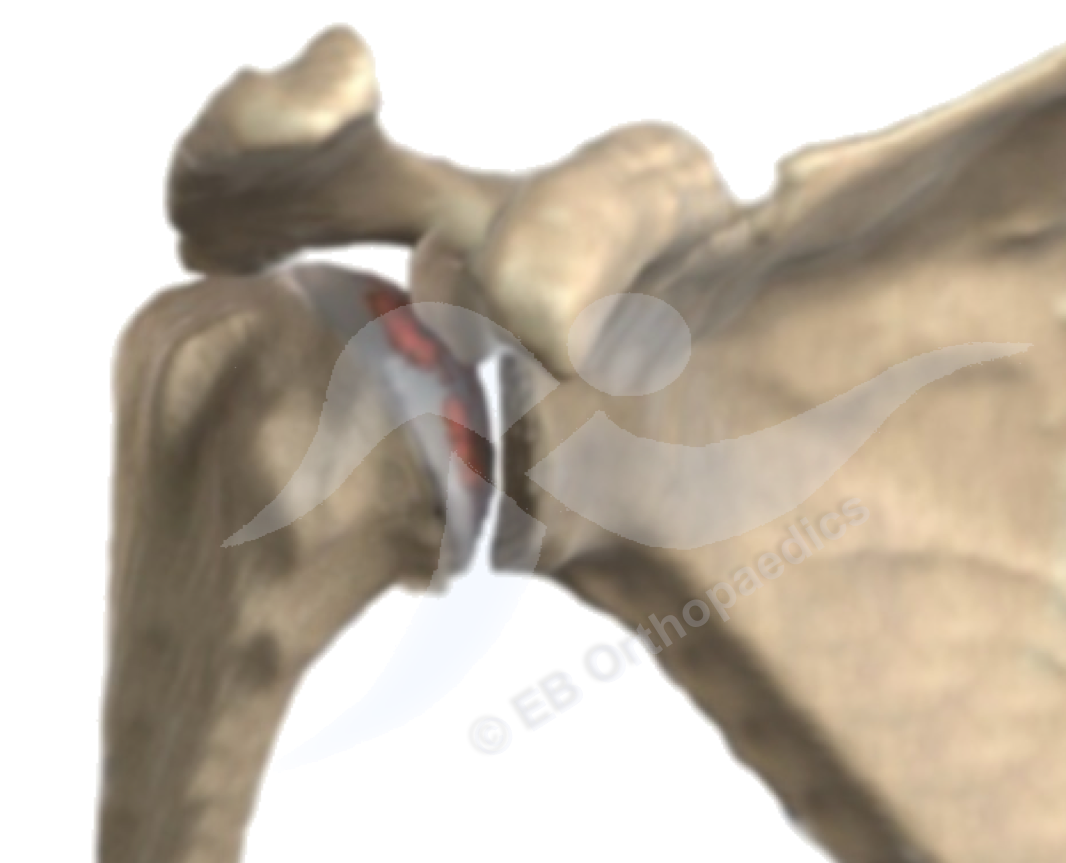Shoulder arthritis

Glenohumeral arthritis is arthritis affecting the glenohumeral joint, which is the main ball and socket joint in the shoulder. While there are many types of arthritis, the commonest is osteoarthritis (‘wear and tear’) that becomes more common with increasing age. Other types of arthritis may occur as part of a body-wide arthritis such as inflammatory arthritis (e.g. rheumatoid arthritis), or after previous injury to the shoulder (post-traumatic arthritis), or following rotator cuff failure (cuff tear arthropathy).
Arthritis is a process whereby the cartilage carpet in the joint is lost, resulting in bone rubbing directly on bone. This stimulates the body to produce more bone (osteophytes) which can stiffen the joint.
Most people report pain and stiffness as the predominant symptoms, although the shoulder may also click, crack or graunch with certain movements. While there tends to be a constant background dull ache, there can be sharper pains as well as periods of exacerbation in pain. These can sometimes follow overuse such as a heavy day of gardening. The stiffness may mean it is difficult or impossible to reach behind you to take something out of a back pocket, or make it difficult to get to the back of your hair. In some cases even cleaning your teeth may be troublesome.
While non-surgical treatments do not affect the underling arthritis, they can control the symptoms from it. In the early stages, simply adjusting what you do and how you do it may be enough to control the pain.
Physiotherapy can be helpful in reducing stiffness and improving the muscles around the shoulder. Physiotherapy can also be helpful with posture control and to advise on different ways to perform tasks in more comfort.
You may find a steroid injection helpful. This may be given if there is uncertainty as to how much of your symptoms are coming from the glenohumeral joint and how much from elsewhere. Injections can provide relief lasting months or longer but the duration of pain relief tends to be different in different people.
Arthroscopy and debridement surgery may be helpful to allow assessment of the joint surfaces, smooth any rough parts, and remove any loose bodies (fragments of bone and soft tissue) that may be floating around the joint.
Shoulder replacement surgery is the most reliable form of surgery, although also the most invasive. There are a variety of types of shoulder replacement. The one that is right for you will depend on a number of factors.
In cases where shoulder replacement surgery is inadvisable due to the risks of surgery or the nature of your shoulder, a special injection (suprascapular nerve block / ablation) may be performed.
You typically have a sling for 6 weeks although gentle exercises start straight away following surgery. The sling is discarded at 6 weeks and work is started on regaining you movement. Strengthening work usually starts around 3 months from surgery.